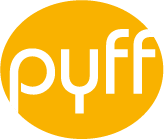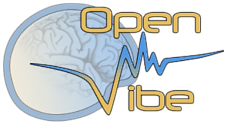24 results.
NeuroMorpho.Org
Visit Website
NeuroMorpho.Org is a centrally curated inventory of digitally reconstructed neurons associated with peer-reviewed publications. It contains contributions from over 500 laboratories worldwide and is continuously updated as new morphological reconstructions are collected, published, and shared. To date, NeuroMorpho.Org is the largest collection of publicly accessible 3D neuronal reconstructions and associated metadata.
The goal of NeuroMorpho.Org is to provide dense coverage of available reconstruction data for the neuroscience community. Data sharing through NeuroMorpho.Org enables the full and continuing research potential of existing digital reconstruction data.
OpenEEG
Visit Website
Many people are interested in what is called neurofeedback or EEG biofeedback training, a generic mental training method which makes the trainee consciously aware of the general activity in the brain. This method shows great potential for improving many mental capabilities and exploring consciousness. Other people want to do experiments with brain-computer interfaces or just want to have a look at their brain at work.
Unfortunately, commercial EEG devices are generally too expensive to become a hobbyist tool or toy.
The OpenEEG project is about making plans and software for do-it-yourself EEG devices available for free (as in GPL). It is aimed toward amateurs who would like to experiment with EEG. However, if you are a pro in any of the fields of electronics, neurofeedback, software development etc., you are of course welcome to join the mailing-list and share your wisdom.
BCI++
Visit Website
BCI++ is a framework dedicated to the development and fast prototyping of Brain-Computer Interface systems, pc-driven protocols for a variety of bio-signal acquisition paradigms and BCI-based applications.
The BCI++ features two main modules communicating via TCP/IP connnection: a module dedicated to signal acquisition, storage and visualization, real-time execution and management of custom algorithms (developed using C/C++ or Matlab®) and a Graphic User Interface module dedicated to pc-driven protocols development based on a high-level 2D/3D Graphic Engine (Irrlicht).
The BCI++ framework guarantees ease of use, high flexibility and powerful solutions for the development of complex paradigms and immersive protocols oriented both to the in-lab research and to end-user application.
PyFF
Visit Website
Pyff is a Pythonic Feedback Framework which provides a platform independent framework to develop BCI feedback applications in Python. It was designed to make the development of feedback applications as easy as possible. Existing solutions have either been implemented in C++, which makes the programming task rather tedious, especially for non-computer-scientists, or in Matlab, which is not well suited for more advanced visual (flickering is inavoidable which is unconfortable for the user and has side effects in the EEG) or auditory feedback applications.
This framework solves this problem by moving the feedback implementations to a general purpose, and easy to learn language like Python. Python provides many so called bindings to other libraries, which allow it to develop high quality multimedia feedback applications, with little effort.
The framework communicates with the rest of the BCI system via a standardized communication protocol using UDP and XML and is therefore suitable to be used with any BCI system that may be adapted to send its control signal via UDP in the specified format.
Having such a general feedback framework will also foster a vivid exchange of feedback applications between BCI groups, even if individual system for processing and classification are used.
OpenVIBE
Visit Website
OpenViBE is a software platform dedicated to designing, testing and using brain-computer interfaces. The package includes a Designer tool to create and run custom applications, along with several pre-configured and demo programs which are ready for use



